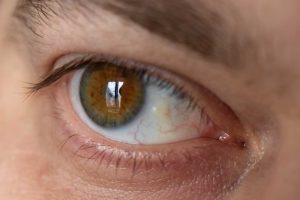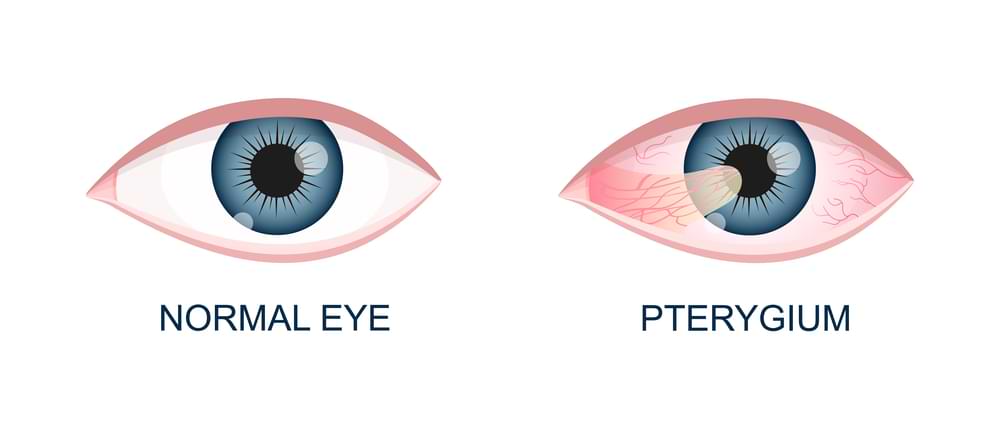Pterygium Removal Treatment in Melbourne

Do you have a fleshy bump growing on your eye or experience constant irritation that worsens under sunlight? You might be developing a pterygium. While often harmless in its early stages, this eye growth can cause blurred vision or discomfort if left untreated. It’s especially common in people with lots of sun and wind exposure.
I’m Minh Van Tran, Principal Optometrist at VisionPro Optometrists. If you’re based in Melbourne and have concerns about a visible eye growth (mild or starting to affect your vision), I’ll walk you through what pterygium is, how it’s treated, and when pterygium removal surgery might be the right choice.
Key Takeaways
- Pterygium is common in outdoor workers and may affect vision over time.
- Early detection helps manage symptoms and prevents vision loss from pterygium growth.
- Surgery is quick, effective, and often required if the cornea is involved.
- UV protection and regular eye checks reduce risk of recurrence or worsening.
- VisionPro offers full assessments, tailored treatment, and access to surgical care.
What Is Pterygium And What Causes It
Pterygium is a common eye growth we often see in Melbourne. It looks like a fleshy, triangular wedge that grows from the white part of your eye (the conjunctiva) and can extend across the cornea, the clear window at the front of your eye.
Why is pterygium called “surfer’s eye”? Because it tends to show up more in those exposed to a lot of sunlight, wind, or dust. It’s not cancerous, but if left untreated, it can become irritating, unsightly, and, in some cases, start to affect vision.
There are a few key risk factors:
- Long-term exposure to ultraviolet (UV) light
- Living or working in dry, dusty, or windy environments
- Lack of eye protection during outdoor work or sports
At VisionPro, we’ve seen pterygium in everyone from tradies and cyclists to gardeners and beachgoers. It’s more common in adults over 30, but even younger people can develop it if they’re frequently outdoors without proper UV protection.
Pterygium Vs Pinguecula: Key Differences
It’s all too easy to confuse pterygium with pinguecula. Both are related to UV exposure and environmental irritation, and both appear as growths on the white part of the eye. But there are important differences in appearance, behaviour, and treatment.
| Feature | Pinguecula | Pterygium |
| Location | White part of the eye (conjunctiva) | Starts on conjunctiva, grows onto cornea |
| Appearance | Yellowish, raised bump | Fleshy, triangular wedge |
| Vision Impact | Rarely affects vision | Can distort vision if it invades the cornea |
| Common Symptoms | Dryness, mild irritation | Redness, foreign-body sensation, visible growth |
| Risk of Progression | Usually remains stable | May continue to grow without treatment |
| Treatment Approach | Lubricating drops, conservative management | May require surgical removal if symptomatic |
| Cause | UV exposure, dust, wind | Same as pinguecula but with deeper tissue growth |
(Pinguecula – yellowish bump)

Pterygium Removal and Other Treatment Options
Not every patient needs a pterygium removal procedure. If the growth is small and symptoms are mild, we’ll start with conservative options:
- Lubricating eye drops to reduce dryness and discomfort
- Anti-inflammatory drops during flare-ups or when redness is prominent
- Lifestyle advice including UV protection and environmental shielding
But if the growth is advancing across the cornea, causing cosmetic concern, or leading to vision changes, we may recommend eye surgery.
Surgical Removal
Surgical removal is a straightforward outpatient procedure that typically takes 30 to 45 minutes and is performed under local anaesthesia. Most patients return home the same day.
One common method is conjunctival autografting, where a piece of your own healthy tissue is used to cover the area, lowering the risk of regrowth. Other approaches may include the use of amniotic membrane grafts or fibrin glue, which can speed up healing and minimise inflammation after surgery.
Pterygium Removal Surgery: What To Expect
| Stage | Details |
| During Surgery | Eye is numbed with local anaesthetic
Pterygium is removed from cornea Graft may be placed to reduce recurrence Temporary shield or patch may be applied |
| Recovery Timeline | Return to light activities in a few days
Use prescribed drops for several weeks Avoid swimming, dust, and direct sun until fully healed |
| Recurrence Rates | Low with modern techniques
UV protection (e.g. sunglasses) helps prevent regrowth |
| Post-Op Care | Step-by-step guidance provided
Follow-up visits scheduled to monitor healing |
A protective patch may be used for a short time after the operation. Most patients can return to light activities within a few days. You’ll be prescribed anti-inflammatory and antibiotic eye drops for a few weeks and asked to avoid sun, wind, swimming, and dusty environments until fully healed.
Recurrence is much less common today, thanks to modern techniques like conjunctival autografting. Sunglasses and good UV protection will help lower the risk even further. My team will guide you through aftercare and book regular reviews to monitor your progress.
Cost And Insurance Considerations
Ophthalmic surgery generally ranges from $1,500 to $3,000, depending on the eye surgeon, clinic, and whether a graft is used. Costs may also include:
- Pre-op consultation and imaging
- Post-op reviews
- Prescription drops and medication
Does Medicare or insurance cover the cost?
If the procedure is medically necessary, such as when the pterygium affects your vision, Medicare may cover part of the cost. You may still need to pay out-of-pocket for surgeon or facility fees.
If you have private health insurance, your fund might cover the hospital or day-surgery portion, depending on your level of extras or hospital cover. It’s best to check with both Medicare and your insurer ahead of time so you know what to expect.
We can also help you understand the likely costs during your consultation.
Preventing Pterygium And Protecting Eye Health
Prevention starts with protection. Even if you’ve never had a pterygium, it pays to protect your eyes in Melbourne’s high-UV climate.
- Wear wraparound sunglasses with full UV protection every time you’re outdoors
- Use a wide-brimmed hat to shield your eyes from direct sun
- Wear safety glasses if you’re working in dusty, windy, or dirty conditions
- Use artificial tears if you spend long hours in dry air or staring at screens
If you’ve had pterygium before or you’re at higher risk (e.g., outdoor job, long history of sun exposure), yearly eye exams are a smart move. Early detection means we can act before symptoms get worse or vision becomes affected.
Why Choose VisionPro Optometrists For Pterygium Care
At VisionPro, we’ve seen hundreds of pterygium cases over the years. Some patients come in worried it might be cancerous. Others are frustrated by recurring redness or the aesthetic look of the growth.
Here’s what sets us apart:
- Strong professional network: We work with reputable Melbourne-based ophthalmic surgeons for referrals and follow-up care when pterygium removal surgery is needed.
- Convenient locations: Our Melbourne eye clinics make it easier to access quality care closer to home.
- Full assessment and imaging: We offer high-resolution eye scans to document growth progression and decide on timing for treatment.
- Ongoing monitoring: After treatment, we provide regular reviews to help keep your eyes healthy and symptom-free.
Final Thoughts
Pterygium often starts small, but if it spreads, it can interfere with your vision. That’s where most people wait too long. Early checks make all the difference from drops, monitoring, or referral for removal.
True enough, not every case needs pterygium removal surgery, but every case needs a plan. If you’re noticing irritation, blurring, or that bump’s getting bigger, book in at your nearest VisionPro clinic in Melbourne.
You can call us on (03) 9687 8787 for Footscray, (03) 9364 5509 for St Albans, (03) 9600 1142 for Sunshine OR arrange an appointment using the “Book An Appointment” button in the navigation menu. All our practices are easily accessible, with nearby parking and public transport options available.

Minh gained his Bachelor of Optometry in 2000, and his Certificate in Ocular Therapeutics (ACO) in 2016.
He started VisionPro Optometrists in 2008 and has been Principal Optometrist ever since, working in both the Footscray and the St Albans practices.
Minh is a member of Optometrist Association Australia and the ACO. He always strives to achieve the highest standard of professionalism when delivering eyecare to all his patients.
Minh’s special areas of interest include ocular diseases and management, children’s vision and contact lens fitting. Minh enjoys travelling and reading in his spare time.


